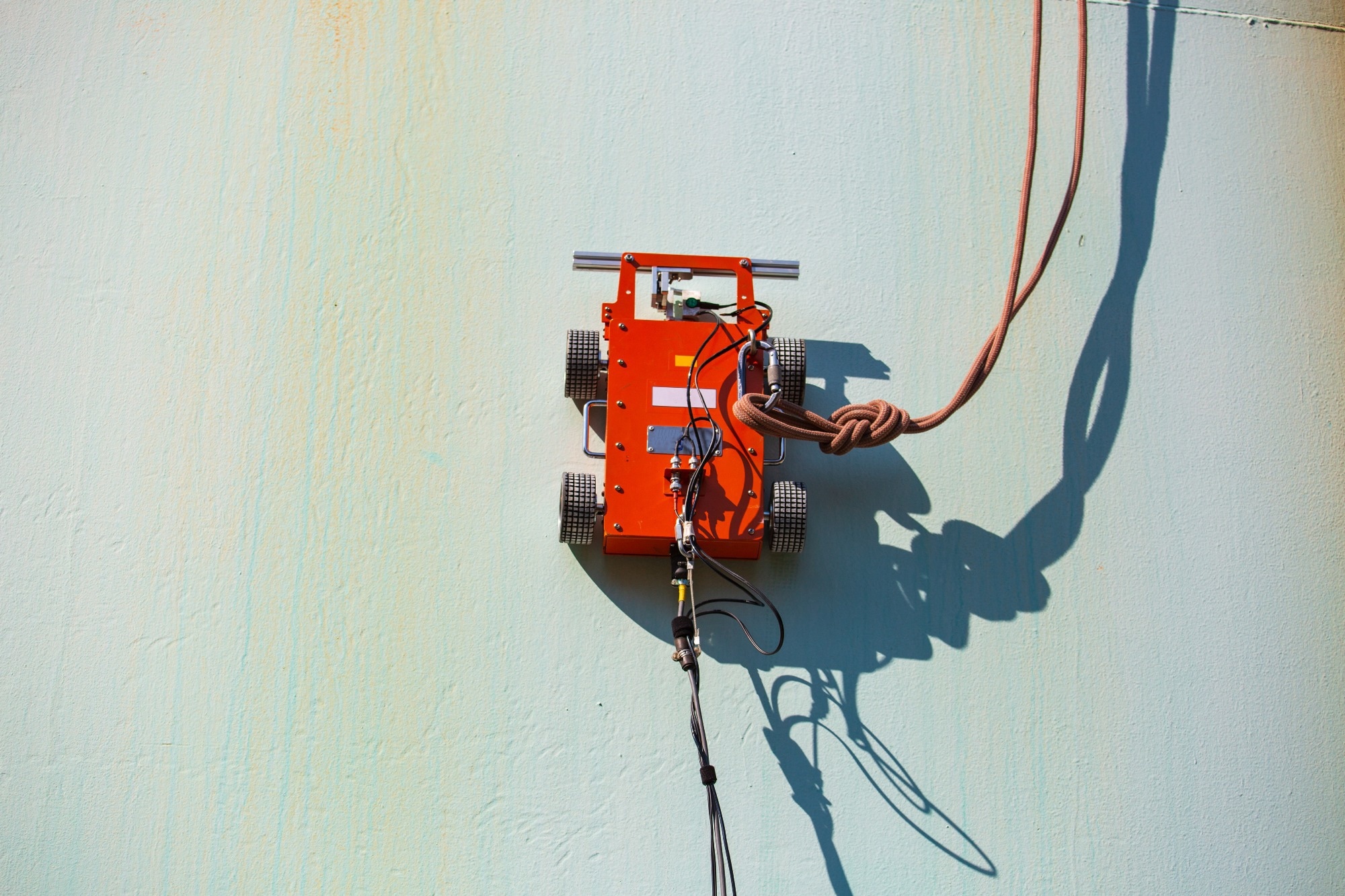In an article published in the journal Nature, researchers addressed the challenges faced by rope-ascending robots (RAR) used in exterior wall work on unstructured buildings. The study defined and analyzed the "rope-locking problem," where ropes may become entangled or caught on structures, hindering robot movement and posing safety risks. The research introduced a separate control technique named Rope Impact Control (RIC) to mitigate this issue, emphasizing the need for force equilibrium and impact analysis for effective rope unlocking.
 Study: Mitigating Rope-Locking Challenges in Rope-Ascending Robots for Unstructured Wall Work. Image credit: noomcpk/Shutterstock
Study: Mitigating Rope-Locking Challenges in Rope-Ascending Robots for Unstructured Wall Work. Image credit: noomcpk/Shutterstock
Background
In contemporary architecture, the advent of exterior wall-working robots, specifically RAR, has significantly impacted building maintenance. Traditionally, workers relied on manual climbing using ropes, posing substantial safety risks. While RARs with synthetic ropes offer effective solutions for structured buildings, challenges arise in unstructured environments where ropes may entangle or lock onto various structures, jeopardizing robot movement and safety. Existing robots, such as dual-rope winch robots and two-rope-driven mobile robots, have limitations in unstructured settings.
Prior research has explored force analysis concerning rope axial direction, typically wrapping around objects, but a gap exists in addressing force analysis in directions perpendicular to the rope movement. To fill this gap, the paper introduced a novel control technique, RIC, specifically designed for unstructured buildings. RIC leveraged force disequilibrium by impacting the rope, causing a change in the rope's contact angle with support structures, thereby unlocking it.
Understanding the limitations of existing force analysis methods, the study employed dynamic analysis to investigate the rope-locking problem on the shear direction as the RAR moves. This innovative approach seeked to overcome challenges faced by RARs in unstructured environments, enhancing their adaptability and safety. The research aimed to contribute a comprehensive understanding of the force dynamics involved in rope-locking scenarios, ultimately facilitating the development of effective control techniques like RIC for optimal RAR performance in diverse architectural settings.
Mathematical Analysis
The study addressed the "rope-locking problem" in RAR moving on unstructured buildings. In structured settings, a rope's tendency to align with the shortest distance between endpoints is manageable. However, unstructured buildings presented challenges where ropes may become entangled at obstacles. The mathematical analysis began with a two-dimensional examination of rope contact with an edge, emphasizing friction's role in the rope-locking problem. A three-dimensional analysis followed, considering helical rope winding assumptions and circular contact with the edge.
Two-Dimensional Edge: Friction coefficients and rope bending angles influenced rope locking. Differential analysis equations for force on the y-axis are derived. The integration of these equations revealed that altering the angle at which the rope is pulled can resolve the rope-locking problem.
Three-Dimensional Edge: Assumptions of helical rope winding and circular contact inform the analysis. Force equations considering rope speed, friction, and angles were developed. Simplifying the analysis by projecting forces onto the x–z and y–z planes, the study obtained a comprehensive equation for the total friction coefficient. The integration concluded that, irrespective of applied tension, rope locking on a three-dimensional edge is possible under certain constraints.
This mathematical exploration laid the groundwork for understanding and mitigating the rope-locking problem in RARs operating in diverse architectural settings.
Experimental Verification
The study conducted experimental verification to assess the accuracy of the force analysis performed for two- and three-dimensional edges. A testbench, comprising an anchor and an angle-moving device, was utilized for the experiments. The anchor, installed at the end of the testbench, facilitated rope locking. The angle-moving device, consisting of a rope pulley, a motor, and a ball screw, allowed controlled movement. Two types of ropes with varying friction coefficients were used. The bending angle (\(\theta\)) was set by adjusting the anchor's height.
For the two-dimensional edge scenario, experiments were conducted with an initial anchor-edge weight angle of θ, while for the three-dimensional edge scenario, the initial angle was ɸ. The experiments involved hanging the rope, attaching a weight (representing the RAR), and precisely measuring θ or ɸ at the moment of rope unlocking. Each experiment was repeated five times for accuracy.
This experimental verification aimed to validate the theoretical force analysis, offering practical insights into the rope-locking problem.
Conclusion
To conclude, this study introduced a force analysis method to address the rope-locking problem in an external wall-working robot using ropes. Experimentation and verification on a testbench confirmed that the rope could be effectively moved at an angle, regardless of tension. The calculated equation exhibited small errors (RMSE < 0.05), attributed to the characteristics of the synthetic fiber rope.
Future work involves developing a motion control algorithm for the robot, ensuring smooth operation in unstructured environments. The study's insights extended beyond rope-utilizing robots, potentially aiding in movement disturbance analysis for cranes and winches.
Journal reference:
- Choi, M., Ahn, S., Kim, H. S., & Seo, T. (2023). Examining the mechanics of rope bending over a three-dimensional edge in ascending robots. Scientific Reports, 13(1), 20663. https://doi.org/10.1038/s41598-023-48078-5, https://www.nature.com/articles/s41598-023-48078-5